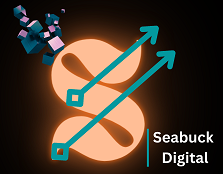I. Introduction

A. Explanation of Local SEO
Local SEO is one of the most important digital marketing strategies. It focuses on optimizing a website’s online presence for local searches. To describe it in simpler language, local SEO helps businesses to be found by potential customers in their local area. Local businesses are discovered easily when online users use search engines like Google or Bing to look for relevant goods or services.
B. Importance of Local SEO
If you are a small business and you rely on local customers to sustain your operations then the importance of Local SEO is huge. Local SEO helps businesses to increase their visibility in search results. It helps to attract more relevant traffic to their website. Eventually, it helps in converting the traffic into leads and customers. It can also help businesses to establish their brand authority in their local market. Brand establishment happens by differentiating themselves from competitors. It helps to build trust with potential customers.
C. Purpose of the article
This article’s goal is to give businesses a comprehensive overview of Local SEO tactics they may employ to enhance their online presence and draw in more local clients. We’ll cover everything from keyword research and competitor analysis to on-page and off-page optimization, Google My Business optimization, and local content marketing. By the end of this article, you’ll have a clear perception of how Local SEO works. You will know about the steps you can take to improve your local search rankings. Hence, you will understand how to drive more business to your website.
II. Research and Analysis

Before you even begin to optimize your website for local search you need to do some research. It’s important to conduct research and analysis. This will help you to understand the list of keywords that will work best for your business. You will be able to build strategies based on your understanding. Here are a few key steps you should take:
A. Keyword research
Keyword research is an essential first step in any Local SEO strategy. You need to identify the keywords that potential customers are using to find businesses like yours in their local area. Start by brainstorming a list of keywords that are relevant to your products or services, and then use keyword research tools like Google Keyword Planner or Ahrefs to determine search volume and competition levels for each keyword.
1. Identifying relevant keywords
Identifying relevant keywords is crucial to the success of your Local SEO efforts. Think about the terms that your ideal customers would use to find businesses like yours. For example, if you’re a bakery in San Francisco, some relevant keywords might include “San Francisco bakery,” “best croissants in San Francisco,” or “fresh bread San Francisco.”
2. Determining search volume and competition
Determining search volume and competition will help you to prioritize which keywords to target in your optimization efforts. Look for keywords with a high search volume and low competition levels. These will be easier to rank for and more likely to attract relevant traffic to your website.
B. Competitor analysis
Competitor analysis is another important step in Local SEO research. You can learn a lot about what’s effective for them and what you can improve on by researching the web presence of your local competition.
1. Identifying local competitors
Identifying local competitors is as simple as conducting a Google search for your target keywords and seeing which businesses show up in the search results. Take note of the top-ranking businesses and their website URLs.
2. Analyzing their online presence
Analyzing their online presence involves looking at factors like their website design and structure, the content they’re publishing, the keywords they’re targeting, and their backlink profile. Use tools like Ahrefs or SEMrush to get a comprehensive view of their SEO strategy.
3. Evaluating their strengths and weaknesses
Evaluating their strengths and weaknesses can help you to identify areas where you can improve your own Local SEO strategy. Look for opportunities to differentiate yourself from your competitors and capitalize on areas where they’re falling short. For instance, you can concentrate on developing a strong social media presence to obtain a competitive advantage if your competitors aren’t using social media efficiently.
III. On-page optimization

Now that you’ve done your research and analysis, it’s time to start optimizing your website for Local SEO. Here are some key on-page optimization strategies to consider:
A. Optimize website structure
Optimizing your website structure is essential for ensuring that search engines can crawl and index your site effectively. This can help to improve your rankings and increase your visibility in local search results.
1. Ensure the website is mobile-friendly
A mobile-friendly website is a must. This is crucial since more and more consumers are looking for local businesses on their cell phones. Make sure your online presence is user-friendly and interactive on mobile devices.
2. Improve website loading speed
Improving your website loading speed is another important factor in on-page optimization. A slow-loading website can negatively impact user experience and hurt your rankings. You must use tools like Google PageSpeed Insights to discover spots for improvement.
B. Create high-quality and relevant content
Creating high-quality and relevant content is also key to Local SEO success. Search engines can understand that your website is relevant to local searchers if you include local keywords and location-based information in your content.
1. Use local keywords in the content
Using local keywords in your content can help to improve your rankings for those keywords in local search results. Be sure to include them naturally in your headings, subheadings, and body copy.
2. Include location-based information
Including location-based information like your address and contact information on your website can also signal to search engines that your business is relevant to local searchers. Consider creating a “Contact Us” page that includes your NAP information.
3. Use images and videos to improve engagement
Using images and videos on your website can also increase engagement and increase the shareability of your information. Consider including photos of your products or team, or creating videos that showcase your business and its offerings.
C. Optimize Meta tags and descriptions
Optimizing your Meta tags and descriptions is another important on-page optimization strategy. By using relevant keywords and including your NAP information in your Meta tags and descriptions, you can improve your chances of appearing in local search results.
1. Use relevant keywords in title tags and Meta descriptions
Using relevant keywords in your title tags and Meta descriptions can help to improve your click-through rates and attract more traffic to your website.
2. Include NAP (name, address, phone number) information
Including your NAP information in your Meta tags and descriptions can also help to improve your local relevance and make it easier for potential customers to contact you.
IV. Off-page optimization

Now that we have covered on-page optimization, let’s move on to off-page optimization. This involves optimizing your online presence outside of your own website.
A. Build local citations
Building local citations is an important part of off-page optimization.
1. Submit the website to local directories
This involves submitting your website to local directories, such as Yelp or Yellow Pages, to increase your online visibility.
2. Ensure consistency of NAP information
Be sure that all directories include the same information for your NAP (name, address, and phone number). This will make sure to avoid confusion for potential customers.
B. Build backlinks
Building backlinks to your website from other high-quality websites is another important aspect of off-page optimization.
1. Reach out to local businesses for backlinks
This can be done by contacting nearby companies and requesting them to link to your website, or by producing excellent content that will probably automatically draw backlinks.
2. Create high-quality content that attracts backlinks
You may raise the authority of your website and raise its search engine ranks by constructing backlinks.
V. Google My Business optimization

Google My Business (GMB) is an essential tool for local businesses to improve their online presence. Let’s dive into some tips for optimizing your GMB profile:
A. Claim and verify GMB listing
The first step is to claim and verify your Google My Business listing. This ensures that you are the owner of the business and allows you to manage your listing.
B. Optimize GMB profile
Once you have claimed your listing, it’s time to optimize your profile.
1. Use high-quality images and videos
This includes using high-quality images and videos that showcase your business.
2. Include business information such as hours of operation and services offered
Include business details like your operating hours and services provided, as this lets potential clients know what you have to offer and when you’re open.
C. Encourage customer reviews
Encouraging customer reviews on your GMB listing is crucial for building trust and credibility with potential customers. Encourage satisfied customers to leave reviews by sending follow-up emails or displaying signs in your business. When you are responding to reviews, both positive and negative, then it shows that you value your customers’ feedback. Responding to reviews also shows that you are committed to improving their experience.
By optimizing your GMB listing, you improve your chances of appearing in local search results and attracting new customers.
VI. Local content marketing

A. Create local content
Local content marketing is an important aspect of any local SEO strategy. Businesses can broaden their exposure and reach inside the community by producing and marketing local content.
1. Write blog posts about local events or news
It’s critical to concentrate on issues and events that are pertinent to the community in order to provide good local content. This may entail creating blog articles on future occasions or stories from the local media that are pertinent.
2. Create videos or podcasts that feature local businesses
Another effective approach is to create videos or podcasts that feature local businesses, such as interviews with business owners or tours of local facilities.
B. Promote local content
Once local content has been created, it’s important to promote it effectively.
1. Share on social media
One effective approach is to share content on social media channels, such as Facebook, Twitter, and Instagram. This can help to increase engagement and drive traffic back to the business’s website.
2. Reach out to local media outlets for coverage
Getting in touch with regional media organizations for coverage is another successful strategy. This can include pitching story ideas to local newspapers or TV stations or reaching out to bloggers and influencers in the local community. Businesses can expand their visibility and community reach by forming connections with regional media outlets.
VII. Conclusion
We’ve covered a lot of ground in this article on Local SEO strategies, so let’s take a quick recap of what we’ve learned.
A. Recap of Local SEO strategies
Firstly, we defined Local SEO and talked about why businesses need to have a strong local online presence. We then went through the steps involved in conducting keyword research and competitor analysis, which are key components of any effective SEO strategy.
Secondly, we discussed on-page SEO, which entails making your website’s structure, content, and Meta tags as search-engine-friendly as possible. We also covered the significance of using regional keywords and place-specific data in your content, as well as how to use photos and videos to increase interaction.
In off-page optimization, we talked about building local citations and backlinks, which are important for establishing credibility and authority in the eyes of search engines. We also touched on the importance of consistent NAP information and creating high-quality content that attracts backlinks.
Moving on to Google My Business optimization, we discussed the importance of claiming and verifying your GMB listing, optimizing your GMB profile with high-quality images and business information, and encouraging customer reviews.
Finally, we discussed local content marketing and how it can help you increase brand recognition and involve your local audience by producing and disseminating locally relevant material through blog posts, videos, and podcasts.
B. Importance of ongoing optimization and monitoring
The tactics described in this article might help you start increasing your local internet presence and bringing in more clients. Local SEO is a challenging but crucial component of online marketing.
Also, it’s critical to keep in mind that SEO is a continuous process. It needs constant monitoring and improvement in order to remain competitive.
C. Future trends in Local SEO
As for future trends, we can expect to see more emphasis on voice search, localizing content, and incorporating emerging technologies such as augmented reality into local marketing efforts.
Read More
How to make featured snippets: Google’s Overview – Seabuck Digital
Google Analytics 4 : The Ultimate Guide for Digital Marketers – Seabuck Digital
A Definitive Guide to Visual marketing and Design and its impact on SEO – Seabuck Digital

